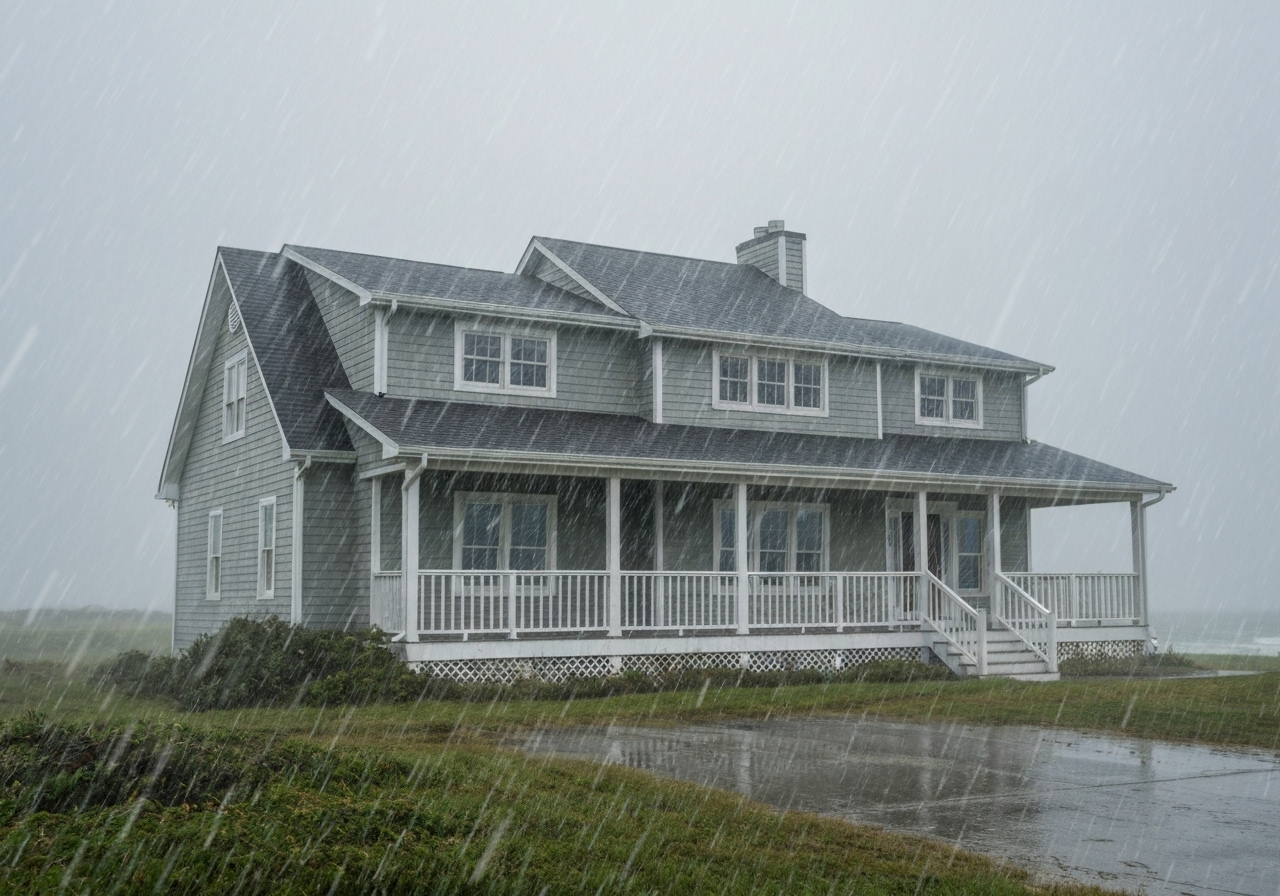Safeguarding Your Home Against the Elements
Living in coastal regions offers unique advantages, but it also comes with the responsibility of preparing for natural disasters. A critical aspect of this preparedness is understanding your homeowners insurance policy, particularly regarding hurricane and windstorm deductibles. These specialized deductibles play a significant role in your financial responsibility should a named storm impact your property, making it essential for every homeowner to grasp their intricacies.
What Exactly Are Hurricane and Windstorm Deductibles?
Unlike a standard homeowner’s insurance deductible, which is typically a flat dollar amount for most perils like fire or theft, hurricane and windstorm deductibles are specific to damage caused by wind and hail. These are frequently calculated as a percentage of your home’s insured value, rather than a fixed sum. For instance, a 2% hurricane deductible on a home insured for $300,000 would mean an out-of-pocket expense of $6,000 before your insurance coverage begins.
It’s important to distinguish between the various types:
- Hurricane Deductible: Applies specifically to damage from officially designated hurricanes by the U.S. National Weather Service (NWS) or U.S. National Hurricane Center (NHC).
- Named Storm Deductible: Broader in scope, this applies to damage from any weather event that has been given a name by the NWS or NHC, including hurricanes, typhoons, tropical storms, and tropical cyclones.
- Windstorm or Wind/Hail Deductible: The broadest category, covering damage from any type of wind or hail event, regardless of whether it was part of a named storm. This could include a severe thunderstorm or a tornado.
Why Specific Storm Deductibles Exist and Their Importance
The concept of specialized storm deductibles gained prominence after major catastrophic events, such as Hurricane Andrew in 1992 and Hurricane Katrina in 2005. These storms inflicted billions in insured losses, prompting insurance companies to reassess their risk exposure in coastal areas. To mitigate potential financial strain and keep premiums affordable in high-risk zones, insurers introduced percentage-based hurricane and windstorm deductibles. This mechanism allows for a shared financial responsibility, where homeowners bear a larger portion of the initial loss for wind-related damage, thereby helping to stabilize the broader insurance market.
Understanding How Percentage Deductibles and Triggers Work
The most common form of hurricane and windstorm deductibles is a percentage of your home’s dwelling coverage limit, usually ranging from 1% to 10%. This percentage is applied to the total insured value of your home, not the cost of the damage. For example, if your home is insured for $400,000 and has a 5% hurricane deductible, you would be responsible for the first $20,000 of covered hurricane damage.
A key element of these deductibles is the “trigger event.” This is the specific condition that must be met for the deductible to apply. Triggers vary by state and insurer but commonly include:
- When the National Weather Service issues a hurricane watch or warning for a specific area.
- When sustained hurricane-force winds (74 mph or more) are measured within a certain proximity to the insured property.
- The duration of the storm, often including a period before and after the storm officially makes landfall or is downgraded.
It’s crucial to understand these triggers, as a claim filed outside of the defined “trigger period” might fall under your standard homeowner’s deductible, which could be a significantly lower out-of-pocket cost. Your policy declarations page provides the specifics of your coverage and applicable deductibles.
State-by-State Insights on Hurricane and Windstorm Deductibles
The application and specifics of hurricane and windstorm deductibles are heavily influenced by state laws and regulations. Nineteen states and the District of Columbia currently have some form of these specialized deductibles. For instance, Florida’s statutes dictate specific deductible options ($500, 2%, 5%, or 10%) and triggers, and mandate that the hurricane deductible applies only once per hurricane season, provided you remain with the same insurer. Other states, like Alabama and Georgia, may give insurers more discretion in determining the trigger rules. Understanding hurricane deductible laws by state is vital for homeowners in these prone areas.
Deciphering Your Home Insurance Policy’s Declarations Page
The declarations page of your home insurance policy is the summary of your coverage, and it’s where you’ll find crucial information about your percentage deductible and how it applies. This page will clearly list your dwelling coverage limit, the percentage for your hurricane or windstorm deductible, and the resulting dollar amount you would be responsible for. It also typically outlines the policy period and any applicable discounts. Regularly reviewing this document, ideally with your insurance agent, helps ensure you are fully aware of your coverage and financial obligations before a storm strikes.
Tips for Mitigating Storm Damage and Potentially Lowering Premiums
Proactive measures can significantly reduce potential storm damage and may even qualify you for insurance discounts. Many states and insurers offer incentives for home improvements that enhance storm resistance. Consider:
- Reinforcing your roof: Strengthening roof-to-wall connections and using impact-resistant roofing materials can make a substantial difference.
- Installing storm shutters: Protecting windows and doors with approved storm shutters can prevent wind and rain intrusion.
- Securing outdoor items: Before a storm, bring in or securely anchor patio furniture, garbage cans, and other lightweight objects that could become projectiles.
- Maintaining your property: Trimming trees near your home and keeping gutters clear helps prevent debris damage and water backup.
These actions not only safeguard your property but also demonstrate to insurers a commitment to risk reduction, which can potentially lead to lower premiums. The Insurance Information Institute provides additional ways to lower your homeowners insurance costs, many of which relate to making your home more disaster-resistant.
Choosing the Right Coverage with Beach Insurance LLC
Navigating the complexities of homeowners insurance, especially concerning hurricane and windstorm deductibles, requires expert guidance. Beach Insurance LLC specializes in helping coastal homeowners understand their unique risks and choose comprehensive coverage that aligns with their financial preparedness. We work to clarify policy language, explain deductible triggers, and identify potential discounts for storm mitigation, ensuring you have the right protection in place for your most valuable asset.
Protecting Your Coastal Home: A Proactive Approach
Being prepared for hurricane season involves more than just assembling an emergency kit. It means thoroughly understanding your insurance policy’s windstorm deductibles before disaster strikes, knowing your financial obligations, and taking steps to harden your home against the elements. By working with knowledgeable professionals and making informed decisions, you can face severe weather events with greater confidence, knowing your home and finances are well-protected.
Visit our Contact Us page.






